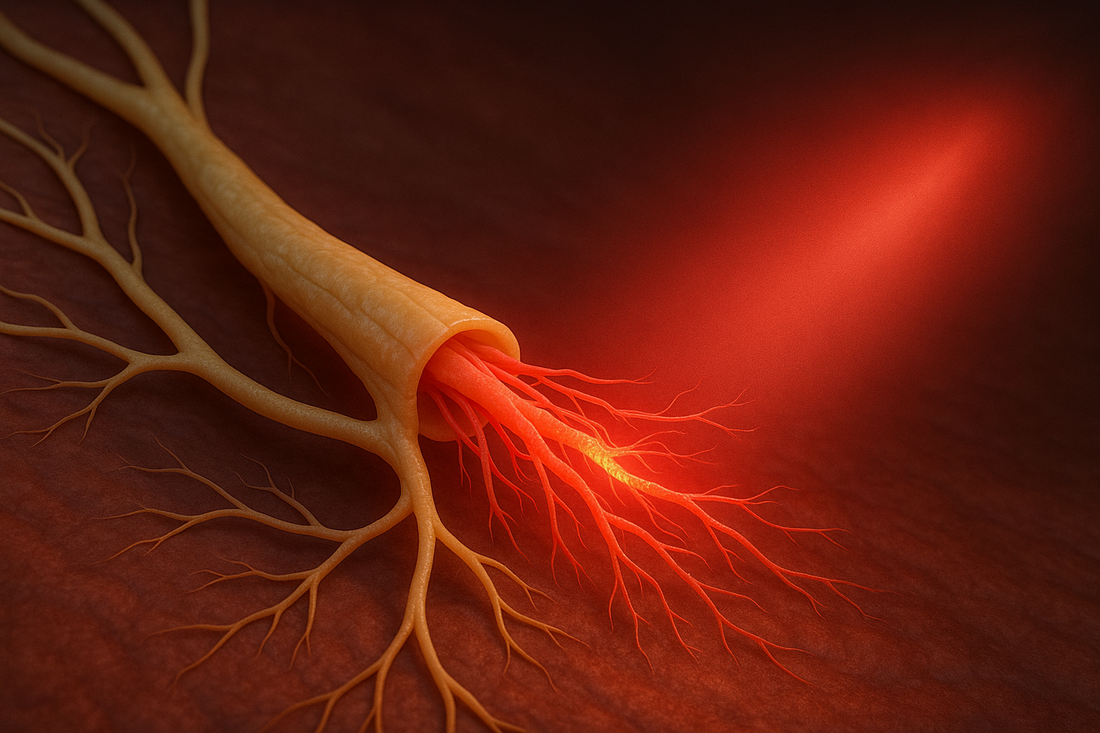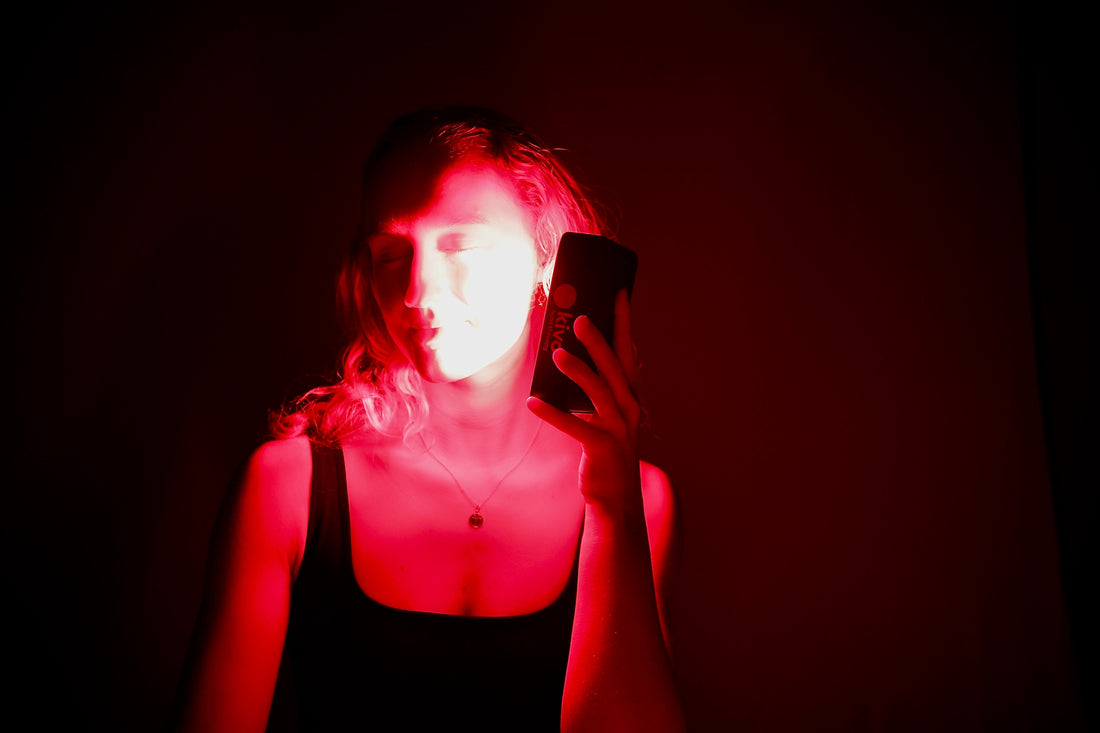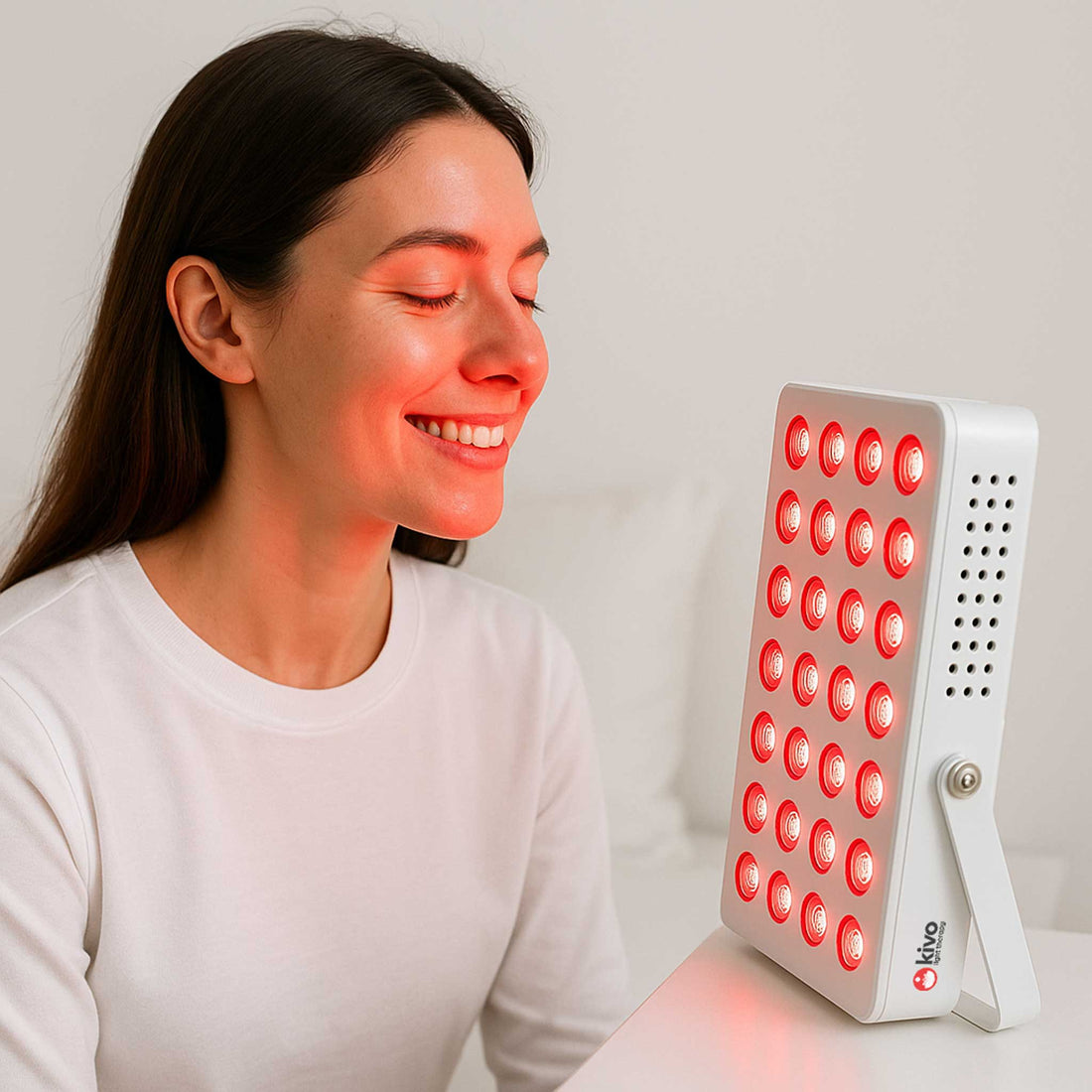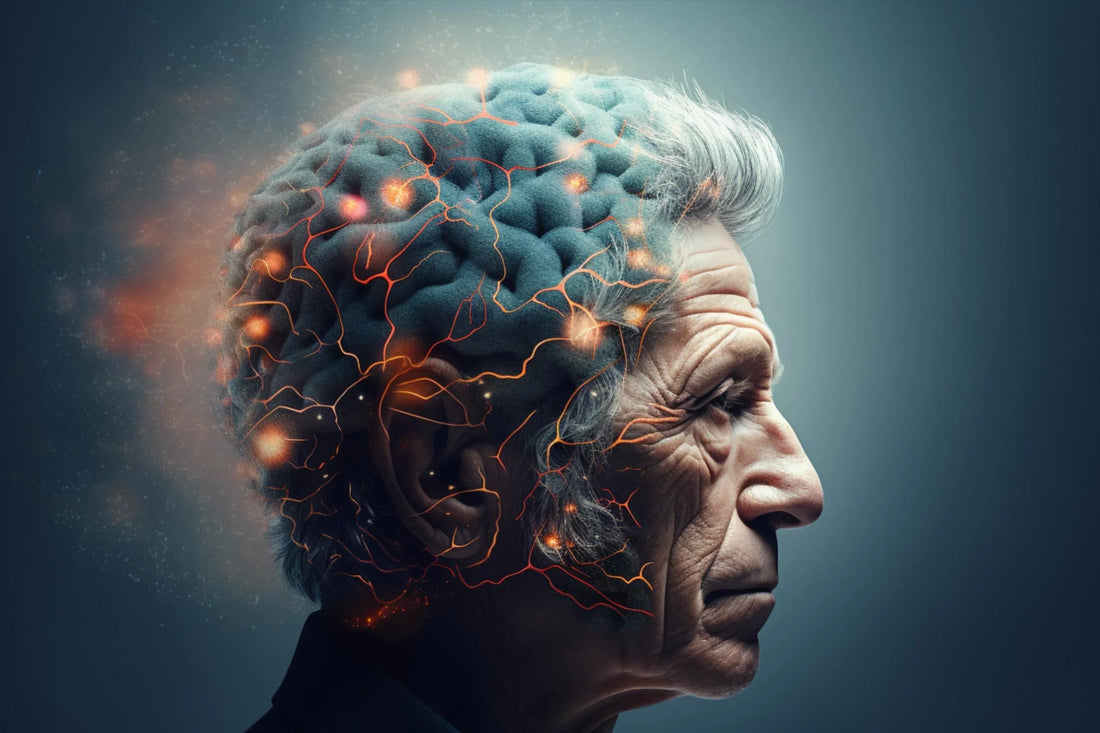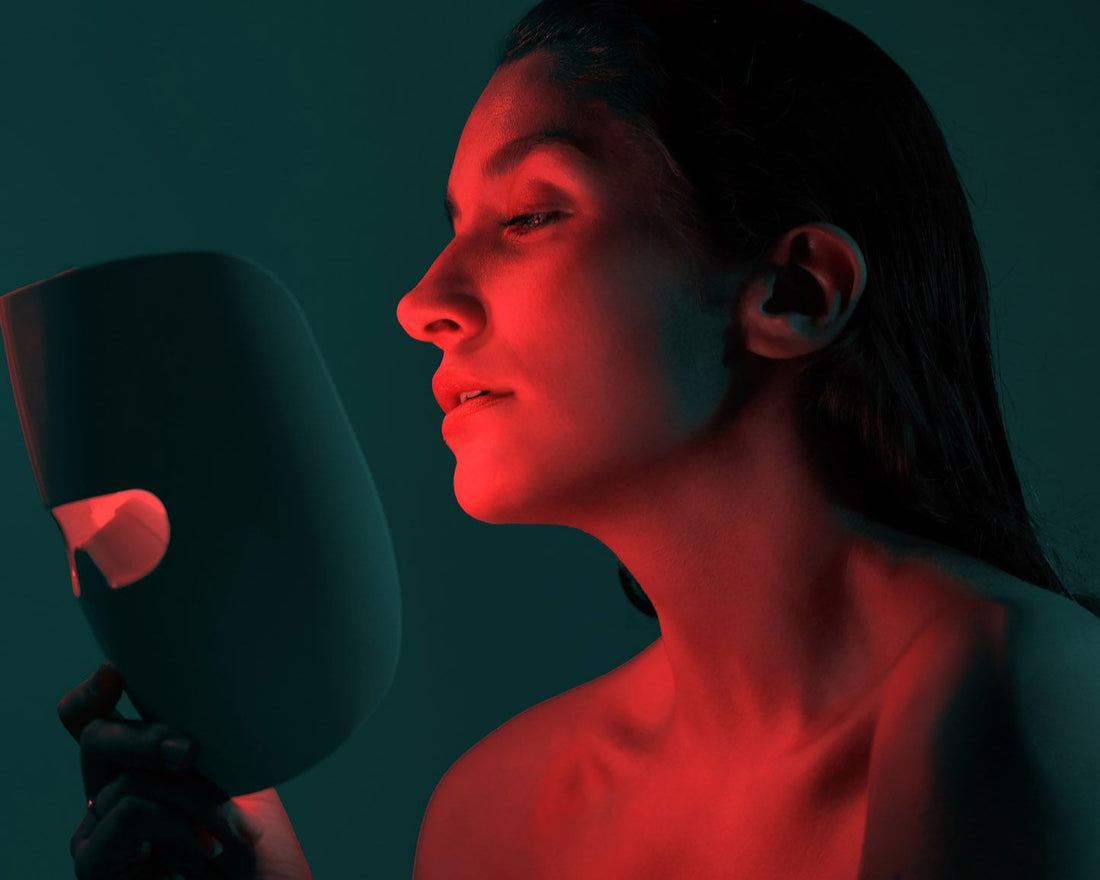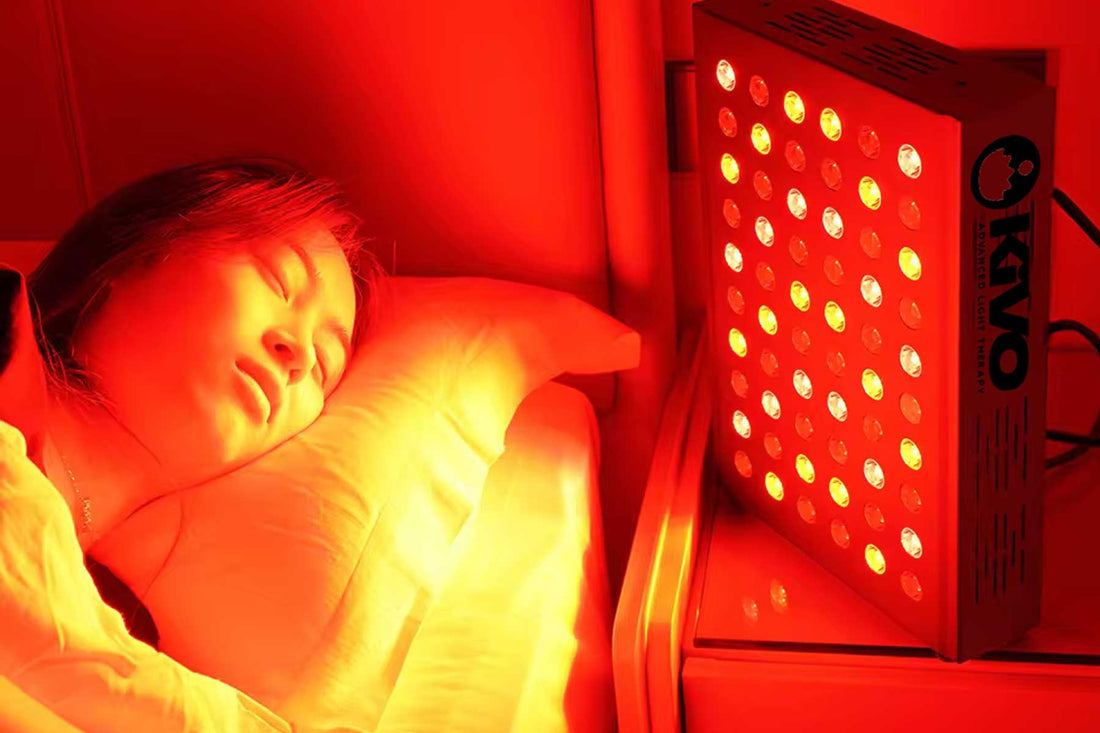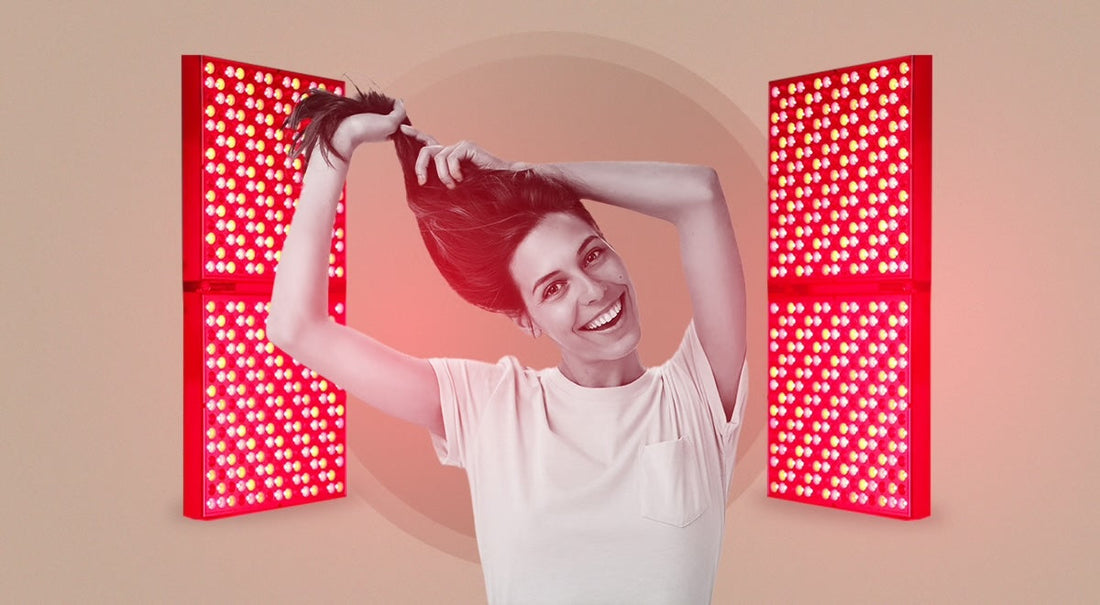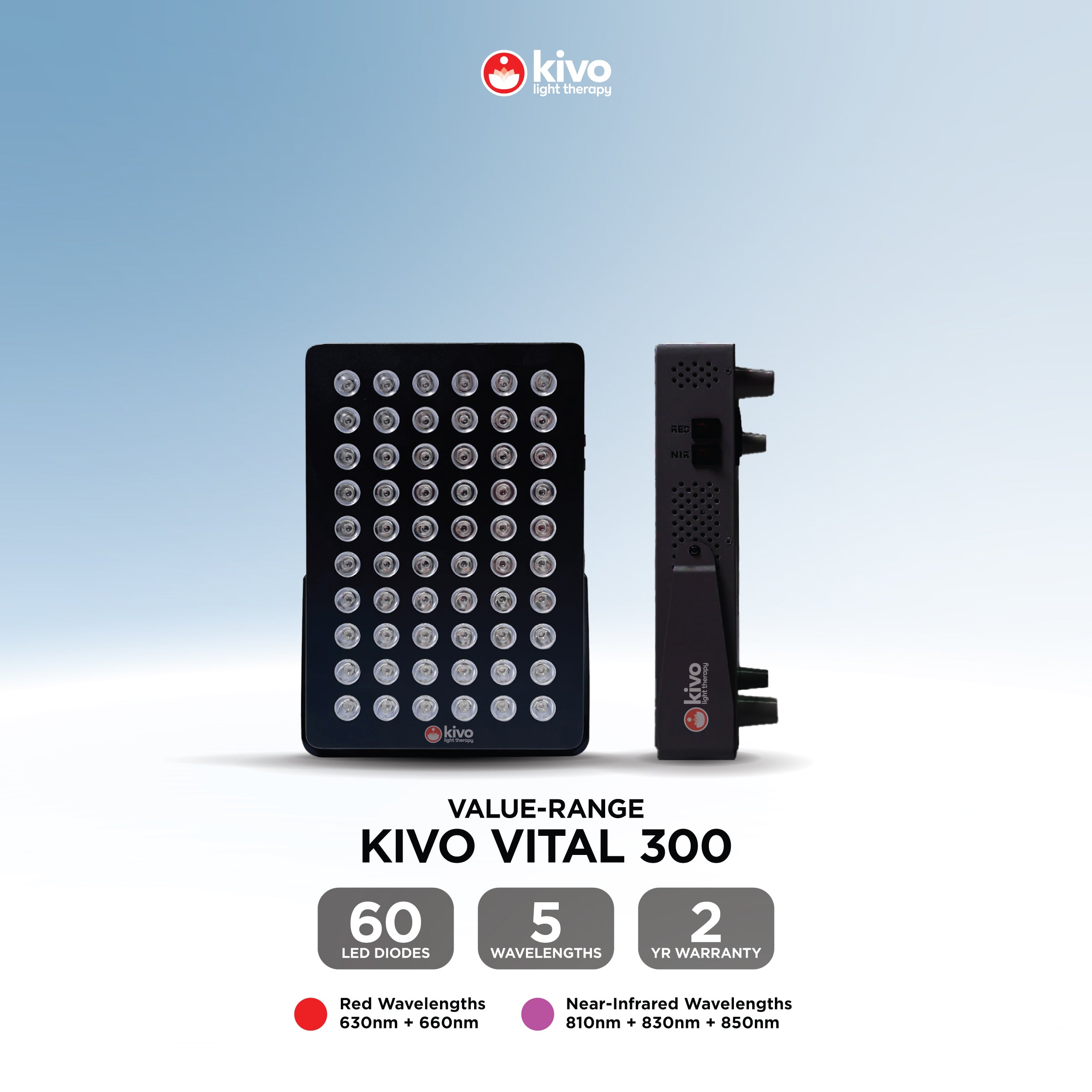Learn about Red Light Therapy
Red and Near-Infrared to help Nerve Regeneration
Nerve damage is one of the most challenging conditions to treat. Whether caused by injury, surgery, diabetes, or chronic illnesses, damage to peripheral nerves often leads to pain, numbness, tingling, and impaired function. Unlike skin or muscle, nerve tissue regenerates very slowly, and in some cases, healing is incomplete. Traditional treatments often focus on managing symptoms rather than repairing the underlying damage. In recent years, however, there has been growing interest in a non-invasive approach that may support the body’s ability to repair nerve tissue: red and near-infrared (NIR) light therapy, also known as photobiomodulation (PBM). Studies are beginning to show that PBM can stimulate cellular repair processes, improve circulation, and enhance recovery in nerve-related conditions. So, how does this work — and what does the science say? How Red and Near-Infrared Light Affect Nerve Cells Both red light (around 630–660 nm) and near-infrared light (around 810–850 nm) penetrate tissues and are absorbed by mitochondria, the “powerhouses” of cells. Specifically, they target an enzyme called cytochrome c oxidase, which is part of the mitochondrial respiratory chain. When stimulated by these wavelengths, mitochondria produce more ATP (adenosine triphosphate) — the energy currency of the cell (NIH). In nerve cells, this extra energy allows for: Axonal repair: Damaged axons (the long projections of neurons) can regrow when energy demands are met. Myelin regeneration: Light therapy may support the repair of myelin, the protective sheath around nerves that is critical for fast and accurate signal transmission. Protein synthesis: Increased ATP fuels the creation of structural proteins needed for nerve repair. In short, light therapy helps “recharge” injured nerves so they can carry out the demanding process of repair. Reducing Oxidative Stress and Inflammation Nerve injury often creates an environment of oxidative stress, where excessive reactive oxygen species (ROS) damage cellular components. Photobiomodulation helps normalize ROS levels by making mitochondria more efficient. This not only protects neurons but also reduces secondary damage that can occur after the initial injury. In addition, light therapy reduces inflammatory cytokines — signalling proteins that can prolong pain and impair healing. By calming the inflammatory response, PBM creates a more favorable environment for regeneration. Research in the Journal of Neurotrauma found that NIR therapy not only reduced oxidative stress but also improved functional recovery after nerve injury (PubMed). Stimulating Neurotrophic Factors One of the most promising findings is that red and NIR light increase levels of neurotrophic factors. These are proteins that guide nerve growth, survival, and function. Among the most important are: Nerve Growth Factor (NGF): Promotes survival and growth of sensory and sympathetic neurons. Brain-Derived Neurotrophic Factor (BDNF): Supports synaptic plasticity, learning, and repair. A study published in Neuroscience Letters found that PBM increased expression of BDNF and NGF in animal models, leading to enhanced axon regeneration and functional recovery (NIH). This means that light therapy doesn’t just provide energy; it also helps activate the genetic and molecular programs necessary for nerves to rebuild themselves. Improving Circulation and Nutrient Delivery Nerves, especially peripheral nerves, have limited blood supply compared to other tissues. Poor circulation can slow healing and leave damaged nerves starved of oxygen and nutrients. Near-infrared light penetrates deeper than red light and stimulates nitric oxide release, which relaxes blood vessels and improves microcirculation. A study in Lasers in Surgery and Medicine demonstrated that animals treated with NIR after nerve injury had faster functional recovery and improved nerve conduction velocity compared to controls (PubMed). Improved blood flow is key not only for repair but also for clearing out metabolic waste products that accumulate in injured tissues. Evidence from Clinical and Preclinical Studies While much of the research has been done in animal models, the results are encouraging - and early human studies are beginning to confirm the benefits. Peripheral nerve injury: Animal studies show that PBM accelerates axonal regrowth and improves recovery of motor and sensory function. Carpal tunnel syndrome: Clinical trials using NIR light have reported reductions in pain and improvements in grip strength and nerve conduction (PubMed). Diabetic neuropathy: Studies suggest that PBM reduces pain and numbness while improving quality of life for patients with diabetic nerve damage. Post-surgical nerve recovery: Patients treated with red/NIR light after surgery have shown reduced pain, less inflammation, and better long-term functional outcomes. Although more large-scale clinical trials are needed, the existing data strongly suggest that photobiomodulation is a safe and effective adjunct therapy for nerve regeneration. What Patients Report Beyond the lab, many people using red and near-infrared therapy devices report improvements such as: Reduced tingling and numbness Decreased nerve pain Improved muscle activation in affected areas Better coordination and grip strength While individual results vary, these reports align with the physiological mechanisms demonstrated in research. Suggested Protocol for Nerve Regeneration (Using the Kivo Elite Panel) If you are considering red and NIR light therapy at home, consistency is key. Nerve healing is slow, and results are usually seen over weeks to months. A commonly recommended protocol is: Wavelength: Red + Near-Infrared Brightness: High (Level 5 on Kivo Elite Panel) Pulse: 40 Hz (associated with neurological repair and brain wave entrainment) Duration: 15–20 minutes per affected area Frequency: 5–7 times per week Treatment Length: At least 8–12 weeks, longer for chronic conditions This can be used alongside conventional treatments such as physical therapy, medications, and lifestyle interventions. Always consult a healthcare provider before starting new therapies, especially if you have a medical condition. For more Light Therapy Treatment Protocols, visit our help site: https://help.myKivo.com Why This Matters Nerve damage can be life-changing, affecting mobility, sensation, and independence. Traditional medicine often offers limited solutions beyond pain relief. Light therapy represents a shift — instead of masking symptoms, it seeks to help the body heal itself. As the research base expands, red and near-infrared therapy may become a standard part of nerve rehabilitation protocols, both in clinics and at home. Devices like the Kivo Elite Panel make it possible to access this promising therapy safely and consistently. For those dealing with nerve injuries, neuropathy, or post-surgical recovery, photobiomodulation offers real hope: faster healing, less pain, and a better chance of regaining function.
Learn moreADHD and Red Light Therapy
ADHD is more than just a buzzword these days. With rising diagnoses across all age groups, more people are looking for drug-free alternatives to help manage symptoms like brain fog, impulsivity, low motivation, and poor focus. One emerging tool that’s getting attention? Red light therapy and near-infrared (NIR) light therapy.
Learn more3 minutes of red light therapy can improve a person’s vision
Clinical Overview: 3 minute morning exposure to Red Light improves eyesight Introduction Mitochondrial dysfunction has emerged as a core mechanism behind many aging-related changes in physiology, including progressive visual decline. Recent research from University College London (UCL) suggests that targeted exposure to deep red light—specifically at 670 nm—may partially restore mitochondrial function in human photoreceptors. In this article, we explore the study’s design and findings in detail, discuss mitochondrial bioenergetics in ocular tissues, and offer evidence-based recommendations for implementing red light therapy at home. We also link findings to Kivo’s red light products, which are designed to meet these parameters. The Role of Mitochondria in Retinal Aging Bioenergetic Demand of Photoreceptors The retina, particularly its photoreceptors (rods and cones), has one of the highest metabolic rates of any tissue in the human body. It requires continuous ATP generation for visual signal transduction, synaptic transmission, and photopigment regeneration. As humans age, mitochondrial respiration declines, ATP production drops, and reactive oxygen species (ROS) increase. This results in impaired photoreceptor function and a decline in both scotopic (night) and photopic (daylight/color) vision. Mitochondrial Decline After Age 40 Multiple studies have shown a steep decline in retinal mitochondrial efficiency by midlife, with some estimates suggesting a 70% reduction in ATP output by age 70. This bioenergetic shortfall correlates with clinical observations of diminished visual contrast, color discrimination, and visual acuity in aging adults. The UCL Study: Design, Exposure Protocol, and Results Study Design Published in Scientific Reports and summarized by Ophthalmology Times, the UCL study was led by Professor Glen Jeffery and investigated the effects of short-duration exposure to 670 nm deep red light on color contrast sensitivity in healthy adults aged 34–70. Sample: 20 participants, both male and female Age range: 34–70 Inclusion criteria: No history of ocular pathology, normal baseline visual function Exposure Parameters Wavelength: 670 nanometers Duration: 3 minutes Frequency: Once per week Intensity: ~8 mW/cm² (non-thermal, well below phototoxicity thresholds) Time of day: Morning (between 8–9 AM) This low-level exposure does not damage retinal tissue, nor does it induce photobleaching. It instead serves to stimulate cytochrome c oxidase, the terminal enzyme in mitochondrial complex IV, enhancing ATP synthesis. Outcome Measures The primary outcome was color contrast sensitivity, assessed using standardized clinical tests. Measurements were taken: Baseline: Before red light exposure Post-Exposure: 3 hours after exposure Follow-Up: 1 week after exposure Key Results Average improvement in color contrast sensitivity: ~17% Maximum improvement in older subjects: ~20% Effect duration: Sustained at least 7 days Afternoon exposure (12–1 PM): No measurable benefit These results reinforce previous findings that retinal mitochondria exhibit diurnal variation in responsiveness, with higher red-light sensitivity in the morning. Clinical Insight: This is consistent with circadian control of mitochondrial respiration, likely modulated by the retinal suprachiasmatic input pathway. Mechanism of Action: How 670 nm Light Affects Mitochondria Cytochrome c Oxidase Activation 670 nm red light falls within the photobiomodulation window (600–900 nm). This range penetrates tissue efficiently and is absorbed by cytochrome c oxidase. The result is: Increased electron transport Enhanced mitochondrial membrane potential Higher ATP output Reduced oxidative stress markers Specificity to Morning Exposure Morning responsiveness likely results from circadian upregulation of cytochrome c oxidase activity. Additionally, retinal mitochondrial respiration peaks earlier in the day, suggesting a time-of-day–dependent therapeutic window. Clinical Implications for Home Use Safety Profile The intensity used (~8 mW/cm²) is far below retinal phototoxicity thresholds. No adverse events were reported. However, guidance on eye safety is essential for home users. Refer to Is Red Light Therapy Safe for Your Eyes?, which outlines proper usage and protective eyewear considerations. Exposure Timing and Duration Ideal timing: 8–9 AM local time Duration: 3 minutes per week Distance: 30–50 cm from the device This matches the protocol used in the UCL study. For help on session timing and placement, see How Long Should You Use a Red Light Therapy Panel For?. Red Light Panels Designed for Retinal Support Kivo’s Red Light Therapy Panels deliver clinically relevant 670 nm wavelengths with intensities similar to those validated in the UCL study. Units such as the Kivo Mini and Kivo Pro Panel are calibrated for safe and effective facial use. Key features include: 670 nm wavelength support Low EMF output Quiet cooling Built-in timer for 3-minute sessions Optional eye shields included You can learn more in our article: Red Light Therapy for Eyes & Eye Health Future Research and Limitations Study Size This was a pilot study with 20 subjects. Larger, multicenter randomized controlled trials (RCTs) are required to validate findings and assess long-term benefit. Objective Measures Future research may employ ERG (electroretinography), optical coherence tomography (OCT), and molecular biomarkers to quantify mitochondrial recovery and correlate it with functional vision gains. Disease-Specific Application While this study targeted normal aging, red light therapy is under investigation for conditions such as: Age-related macular degeneration (AMD) Diabetic retinopathy Glaucoma Initial findings suggest possible benefit in early-stage AMD, but these applications remain investigational. Best Practices for At-Home Use Parameter Recommendation Device Kivo panel with 670 nm support Timing Between 8–9 AM Duration 3 minutes once per week Distance 30–50 cm from eyes Goggles Optional, depending on tolerance and brightness Skin Contact Not necessary—panel may be placed on a table Consistency Weekly sessions recommended Download our free Vision Wellness Tracking Sheet from mykivo.com to help monitor personal progress. Conclusion This study represents a compelling new use for low-level red light therapy: targeted, non-invasive retinal rejuvenation through mitochondrial stimulation. With no known side effects, minimal cost, and a clearly defined dosing schedule, this is a promising area of home-based preventative vision care. Kivo provides professional-grade devices specifically built around this wavelength and intensity. For those over 40 seeking to protect or enhance their vision, Kivo’s red light panels may provide an accessible, scientifically grounded solution. Explore Kivo’s full collection of red light therapy devices or read more on the science in our blog: Red Light Therapy for Eyes & Eye Health Is Red Light Therapy Safe for Your Eyes? How Long Should You Use a Red Light Therapy Panel For?
Learn moreThe Role of Red Light Therapy and Near-Infrared Therapy in Alzheimer's Disease
Introduction Alzheimer's disease (AD) is a progressive neurodegenerative disorder characterized by cognitive decline, memory loss, and behavioral changes. The increasing prevalence of AD, especially in aging populations, has prompted the exploration of novel therapeutic approaches. Red light therapy (RLT) and near-infrared therapy (NIR) have emerged as potential non-invasive treatments that may offer neuroprotective and cognitive benefits for individuals with AD. This document explores how these therapies work, the evidence supporting their use, and their potential benefits and safety considerations. Understanding Alzheimer's Disease Alzheimer's disease is the most common cause of dementia, affecting millions of people worldwide. It involves the accumulation of amyloid-beta plaques and tau tangles in the brain, leading to neuronal death and brain atrophy. The exact cause of AD is unknown, but it is believed to result from a combination of genetic, environmental, and lifestyle factors. The symptoms of AD typically progress from mild memory lapses to severe cognitive impairment, ultimately leading to a loss of independence. Conventional treatments focus on symptom management and slowing disease progression, but there is currently no cure for AD. This has led to significant interest in alternative therapies that may offer new avenues for treatment. Mechanisms of Red Light and Near-Infrared Therapy Red light therapy and near-infrared therapy involve the use of specific wavelengths of light to penetrate tissues and exert therapeutic effects. RLT usually employs wavelengths between 620-750 nm, while NIR typically uses wavelengths from 750-1200 nm. These therapies are believed to work through several biological mechanisms: Photobiomodulation: This process involves the absorption of light photons by cellular chromophores, particularly cytochrome c oxidase in the mitochondria. This absorption enhances mitochondrial function and increases the production of adenosine triphosphate (ATP), which is essential for cellular energy and function. Anti-inflammatory Effects: Both RLT and NIR can reduce inflammation by modulating the activity of inflammatory cytokines and other mediators. This is particularly relevant in AD, where chronic inflammation contributes to neuronal damage. Neuroprotection and Neurogenesis: These therapies may promote neuroprotection by reducing oxidative stress and supporting the survival of neurons. Additionally, they may stimulate neurogenesis, the process of generating new neurons, which is crucial for maintaining cognitive function. Improved Blood Flow: RLT and NIR can enhance cerebral blood flow, ensuring a better supply of oxygen and nutrients to the brain. This can support overall brain health and function. Research Evidence on Red Light and Near-Infrared Therapy in Alzheimer's A growing body of research has investigated the potential of RLT and NIR in treating AD. The evidence spans in vitro studies, animal models, and human clinical trials. In Vitro and Animal Studies Studies on cell cultures and animal models have provided insights into the mechanisms and efficacy of RLT and NIR in AD. For example, research has shown that these therapies can reduce amyloid-beta levels and improve mitochondrial function in neuronal cells . Animal studies have demonstrated that RLT and NIR can enhance cognitive performance, reduce brain inflammation, and decrease the burden of amyloid plaques and tau tangles . Human Clinical Trials Several small-scale clinical trials have explored the effects of RLT and NIR on cognitive function in humans with AD or mild cognitive impairment (MCI). For instance, a pilot study conducted by Naeser et al. (2017) involved patients with MCI who received near-infrared transcranial and intranasal photobiomodulation therapy. The results showed significant improvements in cognitive performance and functional connectivity within the brain . Another study by Berman et al. (2017) investigated the use of transcranial near-infrared light therapy in AD patients. The participants exhibited improvements in cognitive function, mood, and sleep quality, suggesting potential benefits for enhancing overall quality of life . Clinical Applications and Protocols The clinical application of RLT and NIR for AD involves delivering light to the brain using various devices and protocols. These therapies can be administered transcranially (through the skull) or intranasally (through the nasal cavity). The choice of method depends on the target area and desired depth of light penetration. Transcranial Photobiomodulation Transcranial photobiomodulation (tPBM) uses devices that emit light directly to the scalp, allowing photons to penetrate the skull and reach the brain tissue. Devices like helmets or caps equipped with light-emitting diodes (LEDs) or lasers are commonly used. The treatment parameters, such as wavelength, power density, duration, and frequency, are carefully controlled to optimize therapeutic effects. Intranasal Photobiomodulation Intranasal photobiomodulation involves the insertion of a small device into the nostril to deliver light to the brain through the nasal cavity. This method is less invasive and can be easily administered at home. It targets the olfactory bulb and prefrontal cortex, regions implicated in AD pathology. Combined Approaches Some protocols combine transcranial and intranasal methods to enhance the distribution and penetration of light within the brain. This comprehensive approach aims to maximize the therapeutic benefits by targeting multiple brain regions simultaneously. Potential Benefits and Outcomes The potential benefits of RLT and NIR for individuals with AD extend beyond cognitive improvements. These therapies may offer a range of positive outcomes, including: Cognitive Enhancement Numerous studies have reported improvements in cognitive function, including memory, attention, and executive function, following RLT and NIR treatment. These enhancements are believed to result from increased neuronal activity, neurogenesis, and improved synaptic plasticity . Reduction of Behavioral Symptoms AD is often accompanied by behavioral and psychological symptoms, such as depression, anxiety, agitation, and sleep disturbances. RLT and NIR may help alleviate these symptoms by modulating neurochemical pathways and improving brain homeostasis . Improved Mood and Quality of Life Enhanced mood and overall quality of life have been observed in patients receiving RLT and NIR. The reduction in cognitive decline and behavioral symptoms contributes to a better daily living experience and greater independence . Neuroprotective Effects RLT and NIR offer neuroprotection by reducing oxidative stress, inflammation, and apoptosis (cell death). These effects help preserve neuronal integrity and function, potentially slowing the progression of AD . Enhanced Brain Connectivity Functional connectivity within the brain's neural networks is crucial for cognitive processes. RLT and NIR have been shown to improve connectivity between brain regions, supporting more efficient communication and processing . Safety and Side Effects Safety is a critical consideration when evaluating new therapies. RLT and NIR are generally considered safe, with minimal side effects reported. However, it is essential to understand the potential risks and ensure proper usage to avoid adverse effects. Safety Profile RLT and NIR are non-invasive treatments that do not involve surgery or pharmacological interventions, reducing the risk of complications. The most common side effects are mild and may include transient headaches, fatigue, or skin irritation at the site of light application . Contraindications and Precautions While RLT and NIR are safe for most individuals, certain precautions should be taken: Photosensitivity: Individuals with photosensitive conditions should avoid these therapies or consult with a healthcare provider before starting treatment. Pre-existing Conditions: Patients with specific medical conditions, such as epilepsy or certain skin disorders, should seek medical advice before undergoing RLT or NIR. Device Quality: The quality and specifications of the devices used for RLT and NIR are crucial for safety and efficacy. It is important to use devices that meet regulatory standards and are designed for therapeutic purposes. Long-term Safety Long-term safety data for RLT and NIR in AD are limited. Ongoing research is needed to monitor potential long-term effects and ensure sustained safety over extended treatment periods . In conclusion, red light therapy and near-infrared therapy hold promise as novel interventions for Alzheimer's disease. Their potential to improve cognitive function, reduce behavioral symptoms, and provide neuroprotection positions them as valuable tools in the fight against this debilitating condition. Ongoing research and clinical trials will continue to elucidate their mechanisms, optimize treatment protocols, and confirm their long-term safety and efficacy. Sources: Hamblin, M. R. (2016). Photobiomodulation for Alzheimer's Disease: Has the Light Dawned? Photonics. Cassano, P., et al. (2016). Review of Transcranial Photobiomodulation for Major Depressive Disorder and Alzheimer’s Disease. Neurophotonics. De Taboada, L., et al. (2011). Transcranial light-emitting diode therapy to improve cognitive function in chronic, traumatic brain injury. Photomedicine and Laser Surgery. Naeser, M. A., et al. (2017). Significant improvements in cognitive performance post-transcranial, red/near-infrared light-emitting diode treatments in chronic, mild traumatic brain injury: open-protocol study. Journal of Neurotrauma. Berman, M. H., et al. (2017). Low-level light therapy and the brain: A clinical trial in the context of Alzheimer's and Parkinson's disease. Journal of Alzheimer’s Disease. Rojas, J. C., & Gonzalez-Lima, F. (2011). Low-level light therapy of the eye and brain. Eye and Brain. These references provide an overview of the current understanding and ongoing research into the application of red light and near-infrared therapies for Alzheimer's disease.
Learn moreExperts explain the anti-aging benefits of red light therapy for your skin
Red light therapy indeed has gained popularity in the skincare and wellness community for its purported benefits. Its ability to stimulate collagen and elastin production can potentially improve skin texture, reduce fine lines and wrinkles, and even out skin tone. Plus, its noninvasive nature makes it appealing to those seeking alternative skincare solutions without the risks associated with more invasive procedures.
Learn moreRed Light Therapy for Eyes & Eye Health
Red light therapy, also known as photobiomodulation, has gained significant attention in recent years for its potential benefits in promoting eye health and improving vision. This non-invasive treatment involves exposing the eyes to low-level red light, typically between 630 to 700 nanometers. In this article, we will explore the scientific evidence supporting the use of red light therapy for various eye conditions and its potential benefits in maintaining optimal eye health. Red light therapy, also known as photobiomodulation, has been a hot topic in the health and wellness industry. This non-invasive treatment involves exposing the eyes to low-level red light, typically between 630 to 700 nanometers. But what does the science say about its potential benefits for eye health? What is the Scientific Evidence? Studies have shown that red light therapy can help improve vision and promote overall eye health. Research has indicated that red light at specific wavelengths can penetrate the retina and stimulate the production of ATP, the energy source for cells. This can lead to improved cellular function and regeneration in the eyes. Benefits for Various Eye Conditions Red light therapy has shown promise in the treatment of various eye conditions, including age-related macular degeneration, diabetic retinopathy, and glaucoma. By promoting blood flow, reducing inflammation, and supporting cellular repair, red light therapy may help slow the progression of these conditions and improve visual acuity. Maintaining Optimal Eye Health In addition to treating specific eye conditions, red light therapy can also be used as a preventive measure to maintain optimal eye health. By regularly exposing the eyes to red light, individuals may be able to support the overall health of their eyes, reduce the risk of developing age-related eye diseases, and improve visual performance. Overall, the scientific evidence supporting the use of red light therapy for eye health is promising. As more research is conducted in this area, we can expect to see even more potential benefits of this non-invasive treatment. If you're looking to improve your eye health or address specific eye conditions, red light therapy may be worth considering as part of your wellness routine. Backed by Science Red Light and Near Infrared light, is a promising and powerful method to mediate biological functions via low power light wavelength from red to near-infrared regions. Eyes and neurons rely on cytochrome c oxidase to generate energy for metabolic process. NIR light can penetrate these tissues and assist recoveries of neurons in methanol intoxication, optic nerve trauma and neuropathy, retinal injuries and pigmentosa, and macular degeneration. NIR light can also help brains to recover from atherothrombotic stroke, brain injury, and neurodegeneration. No side effects have been observed from animals and humans. Therefore, RL & NIR light could be a safe and effective method for a wide range of applications in ophthalmological and neurological fields in the near future. https://www.ncbi.nlm.nih.gov/pmc/articles/PMC7738953/
Learn moreImprove hair growth with Kivo Red Light Therapy
Red light therapy, also known as low-level laser therapy (LLLT) or photobiomodulation, has garnered attention for its potential to stimulate hair growth and improve hair health. This non-invasive treatment involves exposure to low-level red and near-infrared light wavelengths, which penetrate the skin and reach the hair follicles, offering a range of benefits that can contribute to hair regrowth and overall scalp health. At the core of its effectiveness lies the ability of red light therapy to enhance cellular function and promote tissue repair. When applied to the scalp, red light stimulates the mitochondria, the powerhouse of cells, to produce more adenosine triphosphate (ATP), which is essential for cellular energy. This increase in ATP production fuels cellular processes, including those involved in hair growth. One of the primary mechanisms through which red light therapy aids in hair growth is by promoting blood circulation in the scalp. Improved blood flow means better delivery of oxygen, nutrients, and growth factors to the hair follicles, creating an optimal environment for hair growth. Additionally, enhanced circulation helps remove toxins and waste products that may hinder hair follicle function. Red light therapy also modulates the inflammatory response in the scalp. Chronic inflammation can disrupt the hair growth cycle and contribute to conditions such as alopecia and pattern baldness. By reducing inflammation, red light therapy helps maintain the health of hair follicles and prolong the anagen (growth) phase of the hair cycle. Red light therapy has been shown to stimulate the proliferation of hair follicle cells and promote the production of proteins such as keratin, which are essential for hair strength and structure. This leads to thicker, stronger hair shafts that are less prone to breakage and shedding. Numerous studies support the efficacy of red light therapy for hair growth. For example, a 2019 systematic review published in Lasers in Medical Science analyzed 21 randomized controlled trials and concluded that red light therapy significantly improved hair density and thickness in individuals with androgenetic alopecia, a common form of hair loss. Moreover, red light therapy is a safe and painless treatment option with minimal side effects. Unlike some medications and topical treatments for hair loss, red light therapy does not carry the risk of systemic side effects or skin irritation. It is well-tolerated by most individuals and can be used as a standalone treatment or in conjunction with other hair restoration therapies for enhanced results. It's important to note that consistency is key when undergoing red light therapy for hair growth. While some individuals may notice improvements after just a few sessions, optimal results typically require regular treatments over several weeks or months. Most red light therapy devices designed for hair growth can be used at home, making it a convenient option for individuals seeking to address hair loss concerns. Red light therapy offers a promising solution for individuals struggling with hair loss or seeking to improve the health and appearance of their hair. By stimulating cellular activity, enhancing blood circulation, reducing inflammation, and promoting protein synthesis, red light therapy can help rejuvenate hair follicles, leading to thicker, stronger hair growth. As research in this field continues to evolve, red light therapy is poised to become an increasingly valuable tool in the management of hair loss and scalp conditions. We recommend Kivo Panels for hair restoration, growth, and improvement Sourcehttps://www.ncbi.nlm.nih.gov/pmc/articles/PMC8577899/
Learn more
